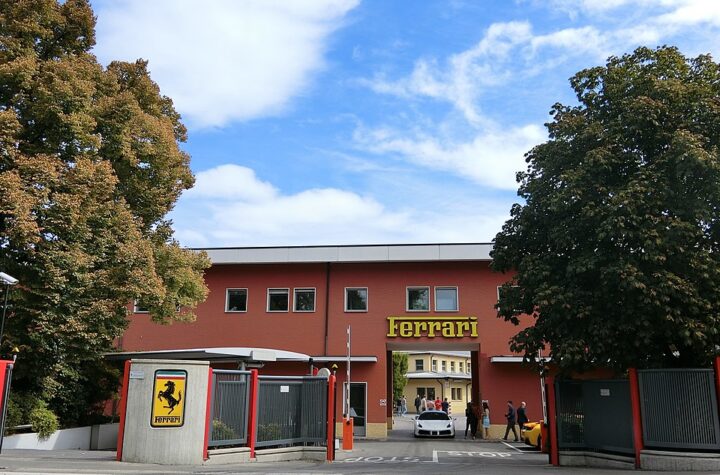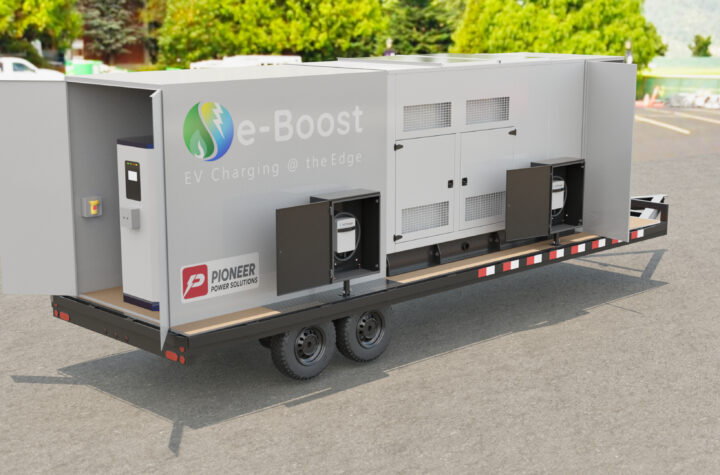
Safe and Sound
With roadside help, realtime traffic reports, diagnostics and satellite communications, the car radio heads into the 21st century with an extreme makeover. Solid brand identities for OnStar, XM Satellite Radio, and to a mounting degree, Sirius Satellite Radio, are the result of marketing teamwork and combined savvy of automakers, suppliers and dealers.
With satellite radio close to critical mass in the marketplace, Chrysler Group reports 100,000 car buyers signed up for Sirius this year and it expects to triple that number in 2005. Ford is offering Sirius as a factory option and Toyota has a similar deal with XM. GM, which promotes frontrunner XM and owns about 5 percent of the company, has signed up 1 million satellite radio customers. Total subscribers include 2.5 million for XM and 800,000 for Sirius. Just this month, Vanguard Car Rental USA Inc. (operator of National Car) announced a program offering thousands of its fleet vehicles equipped with XM Radio nationwide at no extra charge.
What’s all the fuss about? For $10-$13 a month, subscribers can enjoy 70 digital quality, commercial- free music channels; more than 30 channels of news, sports, talk and entertainment from content providers such as CNBC, FOX News, C-SPAN, NPR and ESPN, among others; more than 20 channels dedicated to instant traffic and weather; and a playlist with access to more than 2 million titles.
Thanks to an extensive media ad campaign, GM’s OnStar is practically a household name. By bringing together emergency service providers, wireless telephone and satellite technologies, OnStar offers it subscribers safety, security and convenience services at the push of a button, with 24/7 connectivity to a live Advisor. The system can pinpoint a subscriber vehicle’s location and contact help on the subscriber’s behalf. Exclusively installed at the factory, OnStar is available on more than 50 GM models.
— Carla Kalogeridis
Advanced Chassis Technologies
Anti-lock braking systems (ABS) led to automatic traction control using ABS hard- and software to brake spinning wheels under acceleration. Now “intelligent” chassis control for increasing numbers of premium cars, crossovers and tall, tippy vans and SUVs by sensing under- and oversteer and applying judicious braking to keep them under control.
— Gary Witzenburg
All-Wheel Drive
Subaru pioneered all-wheeldrive cars thirty years ago, then AMC, Pontiac and others gave it a try. But the hardware was expensive, heavy, bulky, fuelinefficient and generally ignored. Yet Subaru persevered and prospered, Germany’s Audi brought AWD to premium cars, the technology matured and 2004 U.S. AWD vehicle production totaled nearly a million vs. 133,000 in 1996, according to CSM Worldwide.
— Gary Witzenburg
Hybrids and Fuel Cells
The parallel hybrid-electric powertrain system seems like the perfect symbiotic relationship. more fuel-efficient gasoline or diesel engine with an electric motor that not only serves as a supercharger but can be used to run the vehicle on electricity only, saving even more fuel. It seems appropriate then, that at least one industry analyst predicts that one day all ICE-powered vehicles will be hybrids. That’s not the case right now, as the high cost of producing and maintaining two power sources in the same vehicle prohibit widespread use of the technology. Still, automakers are jumping on the hybrid bandwagon offering hybrid options on several vehicles going forward.
The industry is also interested in the technology as hybrids use many of the power electronics hydrogen fuel cell powertrain. Hydrogen fuel cell vehicles have shown promise in the laboratory and in controlled circumstances on the world’s roads, but experts don’t see any widespread use of fuel cell vehicles before 2020. Cost is still a major factor on the road to commercialization, as is the need for a hydrogen infrastructure.
— John Peter
Cylinder Deactivation
The idea of deactivating cylinders to reduce fuel consumption is nothing new. The technology, experimented with during WWII, made its North American debut in 1981 as a standard feature on all Cadillac models except Seville. Eaton Corp. developed the innovative V-8-6-4 system which used the industry’s first ECU to switch the engine from 8-to-6 to-4 cylinder operation depending on the amount of power needed. Sadly, GM’s V-8- 6-4 was way ahead of its time and a rash of unpredictable failures relegated it to the scrap heap. Today, thanks to advancements in electronic technology, cylinder deactivation is making a comeback. Mercedes developed a system that was made optional on European-spec V-8s in 1998, debuting on the 1999 SClass.
GM, along with Eaton and Delphi, have developed Displacement on Demand (DoD) for the Vortec 5300 V-8 that is an option on the 2005 Chevrolet TrailBlazer EXT, GMC Envoy XL and Envoy XUV. DoD switches from 8- cylinder to 4-cylinder mode enabling fuel economy gains of about 6 to 8 percent. A new Vortec 3900 3.9L V-6, that will be optional on the new Pontiac G6 will also use a version of GM DoD.
Chrysler designed the new 5.7L Hemi with a similar Multiple Displacement System. The engine, an option on the Chrysler 300C, Dodge Magnum and Jeep Grand Cherokee, promises up to a 10 percent increase in fuel economy. Honda’s Variable Cylinder Management (VCM) system, introduced in 2003 on the J30A 3.0L V-6 in the Japanese Inspire made its North American debut on the 2005 Honda Odyssey minivan and Accord hybrid in the fall of 2004.
— John Peter
Safety
New technologies to help vehicle occupants avoid crashes — and stay safer if there is one — have kept pace with ever-increasing government automotive safety regulations and media blitzing on the subject. Safety has emerged as a branddefining OEM marketing tool and the hallmark of a wise consumer.
The past decade has seen the emergence of adaptive seatbelt and airbag systems designed to tailor their performance and level of protection based on the crash severity and the size and position of the occupant at the time of impact. Impressive crash test performance for vehicles with side airbags have led to the emergence of standard equipment side-curtain airbags — not only in luxury models but also some popular and less expensive cars — which protect the occupant’s head and torso during a side-impact crash. While the industry ponders just how many airbags one vehicle can hold, safety engineers consider the advantages of inflatable seat cushion risers and inflatable floor mats to protect occupants from whiplash and lower extremity injuries as well as active head restraints that deploy during a rear-end crash.
Collision-avoidance systems that sense an impending crash or rollover work hand-in-hand with these advanced passive seatbelt and airbag systems. Honda Motor Co. Ltd. recently announced its Intelligent Night Vision System, which uses infrared cameras to detect pedestrians in or approaching the vehicle’s path and provides the driver video and audio cautions to help prevent such accidents. Pop-up hood technology is under development, which raises the engine hood in the event of a collision with a pedestrian to reduce rise of serious impact to the pedestrian’s head. In the last decade, perhaps no other technology segment has had such impact bumper-to-bumper than those advancements coming from the automotive safety arena.
— Carla Kalogeridis
The New Diesels
It’s impossible to launch a vehicle in Europe these days without an optional diesel powertrain. The 40 percent-plus penetration of diesels in Europe was driven by high fuels costs, but Europeans have also fallen in love with the diesel’s driving dynamics. While diesels are naturally fuel efficient, emissions regulations have driven new technologies that make them quieter and cleaner. Things like turbo direct injection and advancements in diesel particulate filter (DPF) and lean NOx trap (LNT) technology along with a 30 to 40 percent increase in fuel economy make the little diesel sound even sweeter. Aside from larger pickups and a limited number of diesel cars and SUVs introduced by DaimlerChrysler and Volkswagen, the technology hasn’t caught on in North America.
Analysts don’t see the diesel market growing in North America until the end of the decade. Even with sulfur-free fuel coming in 2006, the upcoming U.S. Tier two standards will require that diesels use expensive NOx and particulate filters adding an estimated $1,000 or more to the cost of each engine. Continued advancements in DPF and LNT technology plus further advancements in diesel engine technology such as homogeneous- charge combustion ignition along with renewable biodiesel fuels will only improve the mighty oil burner.
— John Peter
Flexible Manufacturing
The days of single-vehicle volume-production assembly plants are gone. The Japanese set the standard over twenty years ago and the rest of the industry is just now catching up. Flexible manufacturing, in essence, replaces hard tooling with flexible robots capable of being programmed to build several different variations of the same vehicle (regular cab, extended cab or crew cab pickups, for example) or different vehicles altogether (Nissan Quest minivan and Altima sedan) on the same line. Flexible manufacturing allows manufacturers to not only adjust the mix of products to meet consumer demands, eliminating excessive inventory, but also allows them to run their assembly facilities at maximum efficiency. Copying the Japanese kiretsu, suppliers have built manufacturing sites close to assembly facilities that require just-in-time delivery of parts. DaimlerChrysler added a new twist to flexible manufacturing when it announced in August that it would build an assembly plant with separate supplier-run facilities for rolling chassis, body and paint feeding a Jeep final assembly line. When implemented, this new system not only allows for flexible manufacturing, but will save Chrysler hundreds of millions of dollars in the cost of building a new plant.
— John Peter
Lane Departure Warning
Most of us have never heard of Maggie’s Law. The statute, signed by New Jersey Gov. James McGreevey, was named after Maggie McDonnell, who was killed in 1997 after a driver, who had been up for more than 30 hours, fell asleep, crossed three lanes of traffic and hit her car head on.
Drowsy driving has long been a hazard, especially for long haul truckers with deadlines to meet. Iteris Inc. developed a system that would warn sleepy or inattentive drivers that they were leaving their lane. A special camera, mounted behind the rearview mirror, “reads” the lane markers on the road and sends either an audible or visual warning to the driver.
Iteris has licensed its technology to Valeo and the system will make its debut on the 2005 Infiniti FX crossover and 2005 Infiniti M45 sedan that goes on sale this spring. TRW found, through a recent study, that Lane Departure Warning systems can be used as the first line of defense in reducing vehicle rollovers. TRW and other suppliers like Continental Teves, Delphi, Denso and Bosch are integrating Lane Departure Warning into their suite of safety features including things like Active Cruise Control and electronic chassis control systems.
— John Peter
CVT versus 6-speed
The search for better fuel economy goes beyond the engine as automakers experiment with more fuel-efficient transmissions. Two promising transmission technologies, the Continuously Variable Transmission (CVT) and the multi-speed electronic transmission, will battle it out for supremacy moving forward. CVTs aren’t new to the industry. The 1958 Holland DAF City Car came with a belt-driven CVT. Honda launched the Civic HX in the U.S. in 1996 with a belt-driven CVT. But the technology didn’t show promise for volume vehicle applications until the Audi CVT offered on the 2002 Audi A4. The Audi CVT used a multi-link valadium- plated steel chain instead of a belt. The chain could handle the higher torque limits of more powerful engines. Nissan developed its own version of the CVT for the Murano crossover that uses a steel belt. ZF has developed CVTs for cars like the Mini and the Ford Freestyle.
The 6-speed automatic transmission is fast becoming the norm, replacing 4- and 5-speed automatics on many cars. GM and Ford announced a joint-development agreement to build a front-drive 6- speed that will show up on vehicles sometime in 2005.
Initial tests show that while the performance and fuel efficiency of both CVT and 6-speed automatic are about the same, economics may be the differentiator, moving forward. CVTs are more complicated and more expensive to build. And several manufacturers are working together on cost-effective 6- speed transmissions. GM was the first to cancel its CVT program and others may soon follow.
— John Peter














More Stories
Horse Logos In Cars – Car Brands With Equine History
Durable Engine Labels for Harsh Automotive Conditions
How Does Motorcycle Transport Work? Costs, Methods & Companies